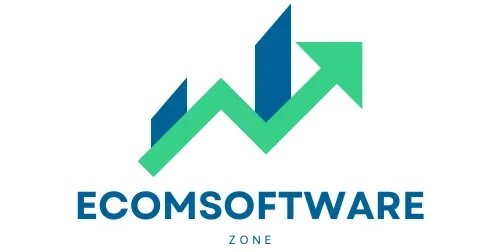How to Track Your Competitors Using Jungle Scout
Competitor tracking, including competitive comparison, is essential for staying ahead in competitive markets against leading competitors. Discover how to track your competitors effectively using Jungle Scout.
With the right tools and strategies, including practical and thorough competitor analyses, you can gain valuable insights into their performance and make informed decisions to boost your business.
Jungle Scout provides a comprehensive platform to monitor competitors’ pricing, products, and sales data, giving you a competitive edge in the e-commerce landscape.
Stay tuned for tips on leveraging Jungle Scout for a thorough competitor analysis to guide competitor research and elevate your competitive intelligence game.
Key Takeaways
- Identify your Amazon competitors to understand the market landscape.
- Utilise Jungle Scout for in-depth analysis of competitor performance and strategies.
- Focus on key metrics such as sales, reviews, and ratings to track competitor success.
- Monitor monthly sales trends to identify patterns and potential opportunities.
- Analyse competitor pricing strategies to adjust your pricing strategy accordingly.
- Evaluate competitor keywords and product listings to enhance your SEO and product positioning.
- Leverage insights gained from competitor tracking for more effective marketing strategies.
Identifying Amazon Competitors
Broad Keywords
When searching for product ideas on Jungle Scout, utilise broad keywords related to your niche to identify potential competitors. This initial step and thorough competitor analysis help guide competitor research to uncover various players in the market.
Specific Long-Tail Keywords
Shift towards using specific long-tail keywords to narrow down the results and focus on more precise competitors. These keywords provide a deeper insight into niche-specific competitors, offering a more targeted approach.
When I was exploring the pet accessories market, broad keywords like “pet supplies” revealed a plethora of sellers. However, refining my search to “dog grooming kits for small breeds,” I discovered niche competitors catering to specific customer needs.
Top 10-20 Competitors
Compile a list of the main competitors by analysing the first page of search results on Jungle Scout. Focus on the top 10 to 20 listings to understand the key players dominating the market within your niche.
Creating this comprehensive list allows you to evaluate each competitor’s strengths and weaknesses. It provides valuable insights into their pricing strategies, product offerings, and customer reviews, enabling you to strategise effectively.
While tracking competitors in the fitness equipment sector, analysing the top 10 sellers on Jungle Scout helped me identify emerging trends and gaps in the market. This information guided my product development process and marketing strategies.
Using Jungle Scout for Analysis
Grouping Competitor Data
Organise competitor data into groups to compare product ideas and performance metrics effectively. You can quickly identify market trends and opportunities by categorising competitors based on product type or price range.
Real-Time Sales Tracking
Leverage real-time sales tracking features to gain insights into your competitors’ listing effectiveness. Monitor their sales performance, pricing strategies, and customer engagement to refine your approach and stay competitive.
Utilising Jungle Scout Tools
Utilise the various tools within Jungle Scout to streamline your analysis process. From Keyword Scout for identifying high-ranking keywords to ASIN research for evaluating competitor listings, Jungle Scout offers a comprehensive suite of resources to help you stay ahead in the market.
I find that grouping competitor data into categories such as product type or price range makes it easier to identify emerging trends and potential gaps in the market. This approach allows me to focus my efforts on areas with less competition, increasing my chances of success.
Regarding real-time sales tracking, I rely on Jungle Scout’s features to closely monitor my competitors’ performance. I can adjust my tactics and seize growth opportunities by monitoring their sales data and pricing strategies.
Exploring the various tools within Jungle Scout has enhanced my competitive analysis efforts. Whether it’s conducting brand research or analysing historical data trends, Jungle Scout provides valuable insights that inform my business decisions.
Key Metrics to Track
Sales Volume
Monitoring sales volume is crucial to understanding how well your competitors perform. You can gauge their product demand and popularity by tracking their sales numbers.
Sales volume provides insights into competitor performance, allowing you to identify top-selling products and potential gaps in the market. This metric helps you tailor your product offerings to meet customer needs effectively.
Revenue
Tracking revenue generated by your competitors gives you a clear picture of their financial success. Understanding their revenue streams can help you assess their pricing strategies and overall business profitability.
Revenue metrics reveal your competitors’ profitability, enabling you to make informed decisions about your pricing strategy and revenue goals. By analysing revenue data, you can adjust your pricing to stay competitive.
Best Seller Rank (BSR)
The Best Seller Rank (BSR) is a critical metric that indicates how well a product sells within its Amazon category. Monitoring your competitors’ BSRs allows you to identify popular products and market trends.
A lower BSR signifies higher sales velocity, indicating a competitive advantage for that product. Tracking BSR changes over time allows you to adapt your marketing strategies to improve your product rankings.
Customer Reviews
Analysing customer reviews of your competitors’ products provides valuable insights into consumer preferences and satisfaction levels. You can identify areas where your competitors excel or fall short by monitoring reviews.
Customer feedback highlights product strengths and weaknesses, helping you refine product features and quality. Use this information to enhance your offerings and address shortcomings compared to your competitors.
Monitoring Monthly Sales
Tracking Competitors’ Sales Performance
Track competitors’ sales performance to gain insights into inventory turnover and demand levels. By monitoring their monthly sales figures, you can understand which products are popular and how they are positioned in the market. This information helps you adjust your own inventory and pricing strategies accordingly.
Comparing Sales Data
Compare your sales data with your competitors to assess your market position. Understanding how your sales stack up against others in the same niche provides valuable benchmarks for improvement. Analyse the differences to identify areas where you can capitalise on opportunities and address weaknesses in your strategy.
Identifying Sales Patterns
Identify patterns in sales fluctuations to predict seasonal trends and market changes. Observing how sales vary over time allows you to anticipate shifts in customer preferences or external factors affecting demand. This proactive approach will enable you to stay ahead of the curve and adapt your business strategies accordingly.
When I first started using Jungle Scout’s product tracker tool, I was amazed by how much I could learn about my competitors’ sales performance. It gave me a clear picture of where I stood in the market and helped me make informed decisions about my inventory levels. Understanding these metrics allowed me to adjust my pricing strategy and improve my competitiveness.
One key lesson I’ve learned from tracking competitors’ monthly sales is the importance of staying agile in response to changing market dynamics. By closely monitoring sales patterns, I could spot emerging trends early on and adjust my product offerings accordingly. This flexibility has been crucial in staying competitive and meeting evolving customer demands.
Analysing Pricing Strategies
Understanding Market Dynamics
Competitors’ pricing strategies provide valuable insights into market dynamics. You can gauge the overall pricing landscape by analysing their competitive prices and making informed decisions. Understanding how competitors price their products helps you position your offerings effectively.
Pricing analysis involves examining different types of pricing models used by competitors. This includes studying their regular prices, discounts, and special promotions. By identifying trends in sales strategies, you can anticipate market shifts and adjust your pricing strategy accordingly.
Promotional Tactics
Competitors often employ various promotional pricing tactics to attract customers. These tactics may include limited-time offers, bundle deals, or discounts on bulk purchases. By monitoring these strategies, you can stay competitive and retain customers by offering similar or more attractive deals.
Assessing the impact of pricing on consumer behaviour is crucial for purchase decision-making. You can fine-tune your pricing and profitability by tracking how consumers respond to competitors’ pricing changes. Conducting a review analysis of customer feedback related to pricing can provide valuable insights for improving your pricing approach.
Consumer Behaviour Adjustment
Adjusting your pricing strategy based on competitor analysis is essential for staying ahead in the market. If competitors lower their prices significantly, you may need to re-evaluate your pricing structure. On the other hand, if competitors increase prices without losing customers, it could indicate opportunities for you to increase profitability.
Evaluating Competitor Keywords
Discovering Keywords
Discover which keywords competitors are ranking for by utilising Jungle Scout’s Keyword Scout tool. Identify the most relevant competitors’ niches to gain valuable insights.
Incorporate successful keywords in competitor listings to enhance visibility and improve your keyword strategy. Keep track of competitor dynamics to stay ahead in the market.
Updating Strategy
Update your keyword strategy regularly based on competitors’ performance and market trends. Monitor changes in competitors’ accounts and adapt your listings accordingly.
Utilise Jungle Scout’s Keyword Scout tool to gain insights into your top competitors’ keyword performance. Implement these findings to boost your rankings and sales.
Personal Insights
When I started tracking my competitors using Jungle Scout, I was amazed by the information available. Incorporating successful keywords from top competitors significantly boosted my listing visibility.
Monitoring competitor products and keyword performance helped me stay competitive in a saturated market. Regular updates to my keyword strategy based on market trends have proven crucial for maintaining a solid online presence.
Assessing Product Listings
Titles
When reviewing product listings, please focus on the titles, which are crucial in attracting customers. Ensure that titles are clear, concise, and contain relevant keywords to improve search visibility. Look for keywords that resonate with your target audience and consider incorporating them into your listings.
Images
Images are another vital aspect of product listings. Analyse the quality and relevance of images used by competitors to understand what appeals to customers visually.
High-quality images can enhance the perceived value of a product and increase click-through rates. Consider investing in professional product photography to improve your listings.
Descriptions
Product descriptions provide valuable information to potential buyers. Examine how competitors structure their descriptions to highlight key features and benefits effectively.
Pay attention to language tone, use of bullet points, and formatting for easy readability. Incorporate compelling storytelling and persuasive language in your descriptions to engage customers and drive conversions.
- Bullet list:
- Clear and concise titles attract customers
- Quality images enhance the perceived value
- Compelling storytelling engages customers
Leveraging Insights for Marketing
Utilising Competitor Analysis
Implement insights gathered from competitor analysis to refine and strengthen your marketing strategies.
By understanding your competitors’ strengths and weaknesses, you can tailor your approach to get an edge in the market. This information provides valuable marketing intelligence that can guide your decisions and actions.
When analysing competitors, focus on their product positioning, pricing strategies, and customer reviews. Identify areas where they excel and areas where they fall short. You can fine-tune your offerings and communication by leveraging this information to meet customer needs better.
Exploring Off-Amazon Marketing Efforts
Dive into your competitors’ marketing efforts to uncover new opportunities. Look at their presence on social media platforms, email campaigns, influencer partnerships, and other channels. By understanding their tactics, you can identify gaps in the market and develop innovative ways to stand out.
For instance, if a competitor successfully engages with customers on Instagram, consider how to leverage that platform to enhance your brand visibility. By keeping an eye on their activities outside of Amazon, you can stay ahead of trends and tap into new avenues for growth.
Enhancing Brand Positioning
Use the findings from competitor analysis to enhance your brand positioning and outreach in the marketplace. You can adjust your messaging and value proposition to highlight your unique strengths by identifying areas where competitors excel. This allows you to differentiate yourself effectively and attract more customers.
For example, if a competitor is known for its eco-friendly packaging, you could emphasise your sustainable practices to appeal to environmentally conscious consumers. You can create a compelling narrative that resonates with your target audience by aligning your brand with what sets you apart from the competition.
Summary
In conclusion, tracking your competitors using Jungle Scout is a strategic approach to gaining insights and staying ahead in the competitive Amazon marketplace.
By identifying key metrics, monitoring sales, analysing pricing strategies, evaluating keywords, and assessing product listings, you can make informed decisions to enhance your marketing strategies. Leveraging these insights will help you understand your competition better and provide valuable data for improving your product offerings.
Remember, continuous monitoring and adaptation are crucial in the dynamic e-commerce landscape. Stay proactive and utilise tools like Jungle Scout to refine your approach and boost your business performance.
Why you need Jungle Scout is simple—it provides the comprehensive data and tools necessary to stay competitive in an ever-evolving marketplace.
With its in-depth analytics, you can identify emerging trends, uncover profitable niches, and refine your overall strategy to outpace competitors.
Ultimately, Jungle Scout empowers you to make data-driven decisions that lead to sustainable business growth on Amazon.
How Can the Free Trial of Jungle Scout Help You Track Competitors More Effectively?
The free trial of Jungle Scout provides powerful tools to monitor your competitors’ product listings, pricing, and sales trends in real time. These insights allow you to strategize effectively in the competitive Amazon marketplace. Why You Should Start Your Free Trial of Jungle Scout Today is to gain an edge over your competitors quickly and efficiently.
Frequently Asked Questions
How can I identify my Amazon competitors effectively?
Conduct thorough market research to pinpoint similar products and effectively identify your Amazon competitors. Use tools like Jungle Scout to track competitors’ sales, pricing strategies, and keywords. Analyse your competitors’ listings and marketing tactics for insights.
What key metrics should I track when monitoring my competitors using Jungle Scout?
When monitoring competitors with Jungle Scout, focus on tracking metrics such as monthly sales performance, pricing strategies, competitor keyword usage, product listing quality, and marketing strategies. These metrics provide valuable insights for competitive analysis and strategic decision-making.
How can I leverage Jungle Scout to analyse competitor pricing strategies?
Jungle Scout allows you to compare your pricing strategies with competitors by providing data on their product prices, discounts, and promotions. Use this information to adjust your pricing strategy, stay competitive, and attract more customers.
Why is it essential to evaluate competitor keywords when tracking competitors on Amazon?
Evaluating competitor keywords is crucial for understanding their search visibility and customer targeting strategies. By analysing the keywords they use in product listings and advertising campaigns, you can improve your keyword selection, enhance SEO performance, and increase brand visibility on Amazon.
How can I assess the effectiveness of my competitor’s product listings through Jungle Scout?
Use Jungle Scouts tools to check the quality of your competitors’ product listings by evaluating title image quality, bullet point clarity, and customer reviews. Understanding what makes their listings successful can help you enhance your product listings for better performance.







